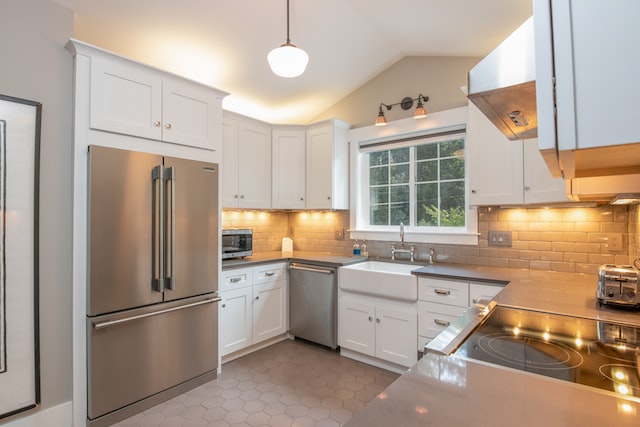One of the things you need to know when you start living in Japan is how to use Japanese home appliances. Here we will explain how to use Japanese home appliances and the points to consider when choosing one. We hope you will find this information useful before purchasing.
Voltage difference from overseas
The voltage in Japan is 100 volts. This is the lowest voltage in the world [1], and a step-up transformer is required if you want to use foreign products that use a higher voltage. If the plug shape is different, you will need to purchase a plug adapter for it.
Also, the magnitude of the electric current flowing in Japan differs depending on the region. In eastern Japan, it is 50 Hertz, and in western Japan, 60 Hertz [2]. Using appliances with different currents may result in malfunctions or failures, so be sure to check what hertz is appropriate for your area and for the appliances you want to use.
How to find appliances
Several methods exist to find appliances. Choose the one that works best for you.
(1) Go to an electronics retailer
You can actually see and check the appliances and ask questions to the clerk. The service is also extensive. However, if you are looking for the cheapest, you will need to visit a variety of stores.
(2) Choose a rental apartment with home appliances
It saves you the trouble of selecting appliances. You can also enjoy a comfortable life from the time you move in. It is a disadvantage that you cannot choose appliances according to your own preferences. Also, while the initial cost can be reduced, the rent may be higher, so consult with the rental property company.
(3) Look for second-hand or set products
You can buy cheap outlets or second-hand appliances. However, it may be scratched or dirty. It may also be fragile.
(4) Shopping online
You may be able to buy new products at a discount. One advantage would be the ability to compare a large number of products easily. There is a disadvantage of not being able to see the actual product, and therefore lacks a sense of security.
Introduction to several product selections
This section is divided into two categories: appliances that should definitely be purchased and appliances that should be considered for the purchase itself.
■Three appliances we recommend
(1) Refrigerator
A refrigerator that can separate refrigeration and freezing is recommended. The best size for a person who likes to cook, like frozen foods, go shopping every day, etc. varies from person to person, so you need to consider your lifestyle and capacity when purchasing. In addition, for a single person living alone, we recommend a refrigerator with a heat-resistant top plate that can accommodate a microwave oven on top.
There are two types of refrigerator cooling systems: direct cooling and intercooling. The direct-cooling type can cool the refrigerator well, but it needs to be cleaned because of frost. If you do not want to bother with maintenance, it is better to choose an intercooling type.
Decide whether you want a right-hand or left-hand opening door, taking into consideration the layout of your kitchen and refrigerator. Some refrigerators can be switched to the left or right side.
Before purchasing, you should check the installation space and the width of the delivery route. Check the width of doorways, hallways, elevators, and stairways.
(2) Washing Machine
Generally speaking, each person does about 1.5 kg of laundry per day [3], so a washing machine with a capacity of about 5 kg is recommended for a single person living alone.
There are drum-type and vertical-type washing machines, but drum-type machines are often more expensive due to their higher performance. Also, be aware that the size of the main unit is large and may not be able to be installed in a one-person dwelling.Water bills are often lower with drum-type systems [4].
Before purchasing, measure the depth of the placement location, the height of the washing machine body, and the height of the faucet.
(3) Microwave Oven
Choose one with an oven function if you like to cook, or one with a warming function only if you do not cook much.
Since piggybacked wiring can cause a fire, we recommend that you have a place where you can use a stand-alone outlet.
Capacities range from large to small, so choose one that fits your lifestyle. 20L is recommended if you live alone.
■ Three appliances you may not need to buy
(1) Rice cooker
For those who do not cook their own rice, a packaged rice or microwave rice cooker may be a good choice. The advantages of purchasing a rice cooker include the fact that you can leave it alone after pressing the button, the fact that it costs less for rice than eating out, and the fact that you can cook other dishes such as soups and stews.
(2) Electric pot
If you don’t mind boiling water in a cooking pot, you don’t need to buy one. You may also choose an electric kettle with similar functions. Compared to an electric pot, it does not have a function to keep water warm, but it can boil water in a short time.
(3) Dishwasher
In Japan, kitchens in apartments for single people are usually small and difficult to equip with a dishwasher. If you can wash dishes by hand, there is no need to buy a dishwasher.If you are busy and want to save time and effort in washing dishes, we recommend that you choose a small dishwasher for one person.
Summary
Depending on a person’s lifestyle, there are a variety of appliances that we recommend. There may also be products that you have purchased but find difficult to understand how to use. If you are concerned about proceeding with the move-in process alone:
SUGEE Housing, operated by SUGEE, is a real estate agent service specializing in foreign nationals. We have English-speaking consultants ready to assist you in your apartment hunting. If you are looking for a new place to live in Japan, please feel free to contact us.
Talk to a SUGEE consultant!
Reference
[1] Japan Electric power information center, Inc. “Voltage and frequency in major countries” https://www.jepic.or.jp/data/g10.html
[2] TEPCO Energy Partner, Inc. https://www.tepco.co.jp/ep/private/guide/detail/hikkoshi.html
[3] Panasonic https://panasonic.jp/joshitsu/comparison/indication.html
[4] Panasonic “Sentakuki no Tategata to Doramushiki wo Tettei Hikaku! Sorezoreno Chigai to Erabikata” (Thorough Comparison of Vertical and Drum Type Washing Machines! Differences and How to Choose) https://panasonic.jp/life/housework/100041.html


